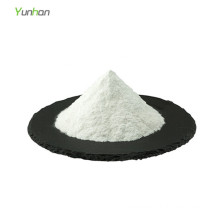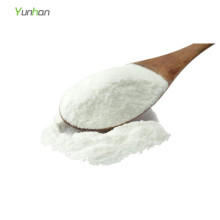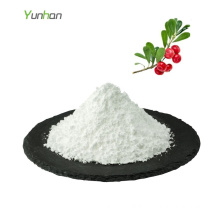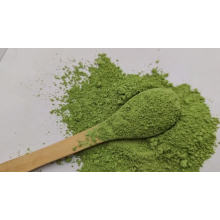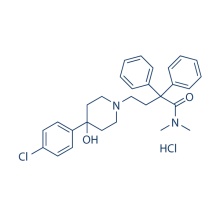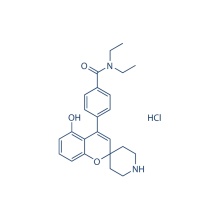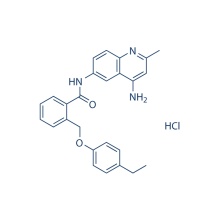Naloxone HCl 357-08-4
Product Description
.cp_wz table {border-top: 1px solid #ccc;border-left:1px solid #ccc; } .cp_wz table td{border-right: 1px solid #ccc; border-bottom: 1px solid #ccc; padding: 5px 0px 0px 5px;} .cp_wz table th {border-right: 1px solid #ccc;border-bottom: 1px solid #ccc; padding: 5px 0px 0px 5px;}
Molecular Weight: 363.84 Naloxone HCl is an opioid inverse agonist drug used to counter the effects of opiate overdose.
Naloxone significantly reduces the LPS-induced degeneration of the
midbrain neurons. Naloxone inactives stereoisomer (+)-naloxone protected
the dopaminergic neurons with equal potency. Naloxone inhibits
LPS-induced activation of microglia and release of proinflammatory
factors, and inhibition of microglia generation of superoxide free
radical best correlated with the neuroprotective effect of naloxone
isomers.
Naloxone is found to partially inhibit the binding of [(3)H]LPS
to cell membranes, whereas it failes to prevent damage to dopaminergic
neurons by peroxynitrite, a product of nitric oxide and superoxide. Naloxone (18.0 mg/kg) suppresses water intake when water is presented
as the sole source of fluid. Naloxone produces a dose-dependent decrease
in ethanol consumption, without altering water intake, when rats are
given a free-choice between the ethanol solution and water.
Naloxone (10 mg/kg) causes a dose-dependent reduction of break-points
and locomotor activity in both the beer and near-beer rats. Naloxone inhibits the LPS-induced activation of microglia and
significantly reduces the LPS-induced loss of dopaminergic neurons in
the rat substantia nigral. Naloxone abolishes this
antinociceptive activity both in the hot-plate test and in the first
phase of the formalin test without affecting the serum concentration of
paracetamol. Naloxone prevents the increase in 5-HT concentration in the
central nervous system and the reduction in 5-HT2 receptors in cortical
membranes.
Conversion of different model animals based on BSA (Value based on data from FDA Draft Guidelines)
For example, to modify the dose of resveratrol used for a mouse (22.4 mg/kg) to a dose based on the BSA for a rat, multiply 22.4 mg/kg by the Km factor for a mouse and then divide by the Km factor for a rat. This calculation results in a rat equivalent dose for resveratrol of 11.2 mg/kg.
Chemical Information
Molarity Calculator
Dilution Calculator
Molecular Weight Calculator
Contact us if you need more details on 357-08-4. We are ready to answer your questions on packaging, logistics, certification or any other aspects about 357-08-4 Naloxone HCl、Naloxone HCl 357-08-4. If these products fail to match your need, please contact us and we would like to provide relevant information.
Molecular Weight: 363.84 Naloxone HCl is an opioid inverse agonist drug used to counter the effects of opiate overdose.
Naloxone significantly reduces the LPS-induced degeneration of the
midbrain neurons. Naloxone inactives stereoisomer (+)-naloxone protected
the dopaminergic neurons with equal potency. Naloxone inhibits
LPS-induced activation of microglia and release of proinflammatory
factors, and inhibition of microglia generation of superoxide free
radical best correlated with the neuroprotective effect of naloxone
isomers.
Naloxone is found to partially inhibit the binding of [(3)H]LPS
to cell membranes, whereas it failes to prevent damage to dopaminergic
neurons by peroxynitrite, a product of nitric oxide and superoxide. Naloxone (18.0 mg/kg) suppresses water intake when water is presented
as the sole source of fluid. Naloxone produces a dose-dependent decrease
in ethanol consumption, without altering water intake, when rats are
given a free-choice between the ethanol solution and water.
Naloxone (10 mg/kg) causes a dose-dependent reduction of break-points
and locomotor activity in both the beer and near-beer rats. Naloxone inhibits the LPS-induced activation of microglia and
significantly reduces the LPS-induced loss of dopaminergic neurons in
the rat substantia nigral. Naloxone abolishes this
antinociceptive activity both in the hot-plate test and in the first
phase of the formalin test without affecting the serum concentration of
paracetamol. Naloxone prevents the increase in 5-HT concentration in the
central nervous system and the reduction in 5-HT2 receptors in cortical
membranes.
Conversion of different model animals based on BSA (Value based on data from FDA Draft Guidelines)
| Species | Baboon | Dog | Monkey | Rabbit | Guinea pig | Rat | Hamster | Mouse |
| Weight (kg) | 12 | 10 | 3 | 1.8 | 0.4 | 0.15 | 0.08 | 0.02 |
| Body Surface Area (m2) | 0.6 | 0.5 | 0.24 | 0.15 | 0.05 | 0.025 | 0.02 | 0.007 |
| Km factor | 20 | 20 | 12 | 12 | 8 | 6 | 5 | 3 |
| Animal A (mg/kg) = Animal B (mg/kg) multiplied by | Animal B Km |
| Animal A Km |
For example, to modify the dose of resveratrol used for a mouse (22.4 mg/kg) to a dose based on the BSA for a rat, multiply 22.4 mg/kg by the Km factor for a mouse and then divide by the Km factor for a rat. This calculation results in a rat equivalent dose for resveratrol of 11.2 mg/kg.
| Rat dose (mg/kg) = mouse dose (22.4 mg/kg) × | mouse Km(3) | = 11.2 mg/kg |
| rat Km(6) |
Chemical Information
| Molecular Weight (MW) | 363.84 |
|---|---|
| Formula | C19H21NO4.HCl |
| CAS No. | 357-08-4 |
| Storage | 3 years -20℃Powder |
|---|---|
| 6 months-80℃in solvent (DMSO, water, etc.) | |
| Synonyms | |
| Solubility (25°C) * | In vitro | DMSO | 73 mg/mL (200.63 mM) |
|---|---|---|---|
| Water | 73 mg/mL (200.63 mM) | ||
| Ethanol | <1 mg/mL ( | ||
| | |||
| Chemical Name | Morphinan-6-one, 4,5-epoxy-3,14-dihydroxy-17-(2-propen-1-yl)-, hydrochloride (1:1), (5α)- |
|---|
Molarity Calculator
Dilution Calculator
Molecular Weight Calculator
Contact us if you need more details on 357-08-4. We are ready to answer your questions on packaging, logistics, certification or any other aspects about 357-08-4 Naloxone HCl、Naloxone HCl 357-08-4. If these products fail to match your need, please contact us and we would like to provide relevant information.
Product Categories : Neuronal Signaling > Opioid Receptor Inhibitor
Other Products
Hot Products
Astragaloside AChlortetracycline HCl 64-72-2Paclitaxel 33069-62-4Dexamethasone Acetate 1177-87-3Dinaciclib (SCH727965) 779353-01-4CHIR-124 405168-58-3Ro3280 1062243-51-9TAME 901-47-3CCG-1423 285986-88-110058-F4 403811-55-2Dabigatran (BIBR 953) 211914-51-1H 89 2HCl 130964-39-5T0901317 293754-55-9Aprepitant 170729-80-3Turofexorate Isopropyl (XL335) 629664-81-9BMS-378806 357263-13-9

